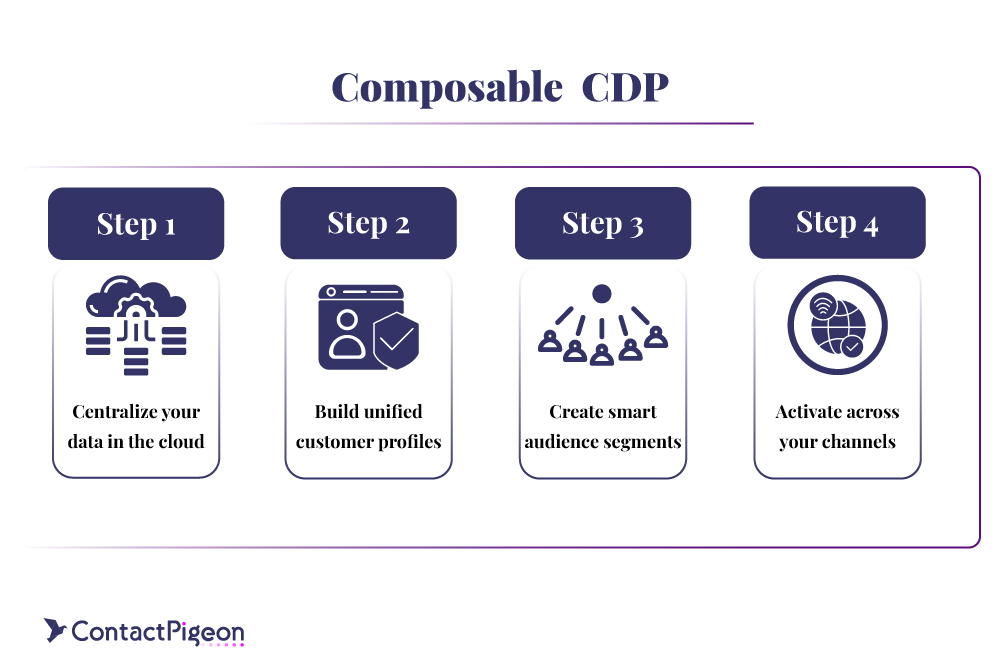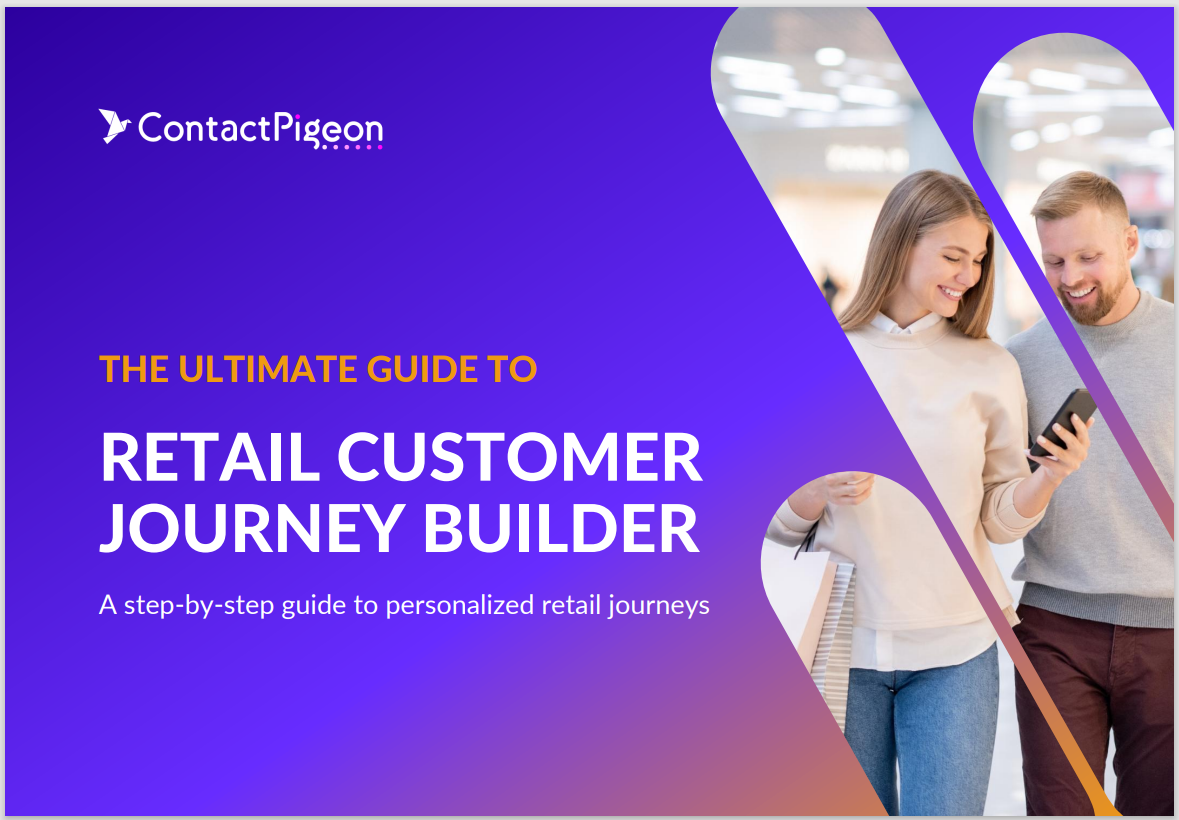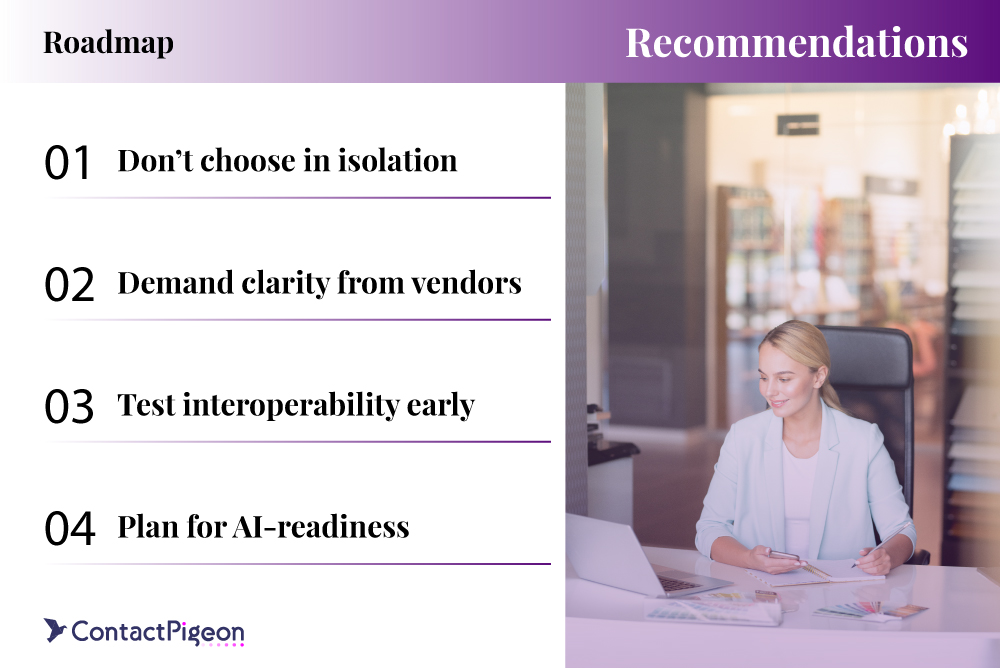Retailers today are under increasing pressure to unify fragmented customer data, deliver personalized experiences at scale, and prove the ROI of their martech investments. As the packaged vs composable CDP debate takes center stage, customer data platforms (CDPs) are rapidly evolving from marketing-centric tools into enterprise-wide infrastructure. These platforms now underpin everything from omnichannel personalization to AI-driven decisioning. This evolution raises a critical question in every retail boardroom: should you double down on a packaged CDP, or embrace the flexibility of a composable CDP, a modular, API-first approach built around your cloud data warehouse and best-of-breed components?
In this article, we break down the packaged vs composable CDP debate using insights from Gartner’s 2025 CDP comparison report. You’ll gain a clear framework to evaluate the right CDP architecture for your growth strategy, organizational structure, and future-facing customer experience goals.
What is a packaged CDP?

A packaged CDP for retail is a vendor-managed, all-in-one platform that delivers core capabilities like identity resolution, audience segmentation, and activation within a unified interface. It is often the right choice when the priority is speed to value, especially for brands that need fast deployment, streamlined execution, and a reliable set of pre-integrated features without heavy customization or engineering investment.
These solutions are designed to provide a centralized, marketer-friendly environment for collecting, unifying, and activating customer data across channels, typically with minimal configuration and IT support. With prebuilt workflows, drag-and-drop segment builders, and native integrations into email, SMS, and advertising platforms, packaged CDPs streamline omnichannel execution and reduce operational complexity.
In retail, this model shines in scenarios like:
- Loyalty program personalization across in-store and digital touchpoints
- Automated campaign targeting based on behavioral or transactional data
- Simple product recommendations or cart abandonment follow-ups
What is a composable CDP?

A composable CDP for retail is a modular, API-based approach to customer data infrastructure that allows retailers to assemble best-of-breed components, such as identity resolution, profile unification, segmentation, and activation, around their existing data architecture. It can be the right strategic fit when flexibility, data depth, and integration with enterprise analytics are more valuable than plug-and-play convenience. It’s ideal for scaling retailers who view their retail customer data platform as a long-term investment in unified CX and real-time decisioning.
Unlike monolithic systems, a composable CDP integrates directly with cloud data warehouses (e.g., Snowflake, BigQuery) and advanced analytics tools, enabling greater control, interoperability, and scalability across the enterprise. This architecture supports a more technical, IT-led implementation where marketing, data science, and engineering teams collaborate across shared data pipelines.
Retailers often turn to composable CDPs for high-performance use cases such as:
- Predictive modeling for churn risk, CLV, or product affinity
- AI-powered personalization across websites, mobile apps, and call centers
- Omnichannel journey orchestration where triggers span physical and digital touchpoints
Ready to turn unified data into real-time action? Discover how ContactPigeon’s Omnichannel CDP empowers retailers to personalize every touchpoint.

Build smarter customer journeys and activate AI-driven personalization for repeat purchases.
Packaged vs. composable CDPs: Retail impact comparison
Before selecting a CDP, retail leaders must understand how each model impacts real-world operations, from campaign agility to data governance. The table below offers a side-by-side CDP comparison tailored to retail enterprises, helping CMOs, CIOs, and analytics teams evaluate which approach aligns best with their goals, tech maturity, and customer experience vision.
| Attribute | Packaged CDP | Composable CDP |
|---|---|---|
| Deployment Speed | Fast, turnkey setup | Slower, phased deployment |
| IT Involvement | Minimal ongoing support | High technical expertise |
| Flexibility | Limited customization | Highly modular |
| Data Control | Vendor-managed | Full enterprise ownership |
| Best For | Marketing-led teams | Data-driven organizations |
| Integration | Native connectors included | Requires custom integrations |
| Governance Fit | Centralized control | Federated, multi-team support |
| Cost Model | Upfront or license-based | Consumption-based or modular |
| Scalability | Medium to high | High, built for scale |
| Retail Readiness | Strong for common use cases | Ideal for advanced CX strategy |
How to choose between packaged vs composable CDPs
A packaged CDP is ideal when you want speed, ease of use, and a self-contained system for marketing-led execution. A composable CDP, however, is best suited for retailers seeking data precision, control, and future extensibility, particularly when building a scalable retail customer data platform. The right CDP architecture depends on more than just feature sets—it requires an honest assessment of your team’s capabilities, data infrastructure, and business goals. Ask yourself:
- Do you need fast time-to-value for marketing activation and personalization campaigns?
- Would your team benefit from a turnkey solution or can they manage complex data flows and API integrations?
- How interoperable is your current retail martech strategy, can it support a modular, composable approach?
- Is your team prepared to manage schema evolution, reverse ETL pipelines, and real-time data syncs?
- Do you need direct access to raw and enriched data for predictive modeling or personalization algorithms?
- Can the CDP integrate into your analytics stack, cloud warehouse, and orchestration tools?
Multizone architectures: The emerging middle ground
A multizone CDP architecture blends the best of both worlds, using a composable data foundation (e.g., Hightouch, Snowflake) with packaged execution layers (e.g., Adobe Campaign or Salesforce Marketing Cloud). However, multizone CDPs add complexity in procurement, compliance, and analytics ownership. Despite this, they offer significant strategic upside: customized CX built on composable infrastructure, paired with packaged CDP orchestration for rapid campaign deployment. Many large retailers operate in this hybrid model to:
- Support federated governance
- Avoid data silos
- Enable both technical and marketing teams to work in parallel
Recommendations: How to future-proof your MarTech stack

The long-term success of your retail customer data platform, whether you choose a packaged vs composable CDP, hinges not on features alone, but on how well it supports your evolving business capabilities, data strategy, and CX goals. Too often, CDP investments are made in isolation, without aligning across teams or forecasting how needs will shift over time. The result? Tools that underdeliver, data silos that reemerge, and costly rebuilds.
Start with a capability roadmap
This roadmap becomes your north star for technology selection, ensuring you invest in a CDP for retail that supports both near-term execution and long-term scale. Before choosing a CDP architecture, develop a business capability map that identifies:
- Which departments and workflows require customer data today
- Which strategic functions (e.g., predictive analytics, real-time CX, personalization engines) will need data access in the next 12–24 months
- The required cadence of that data (real-time, hourly, batch)
#1 Step: Don’t choose in isolation
The best CDP decisions happen at the intersection of marketing agility, data maturity, and IT governance and a retail martech strategy must be cross-functional by design. Don’t allow marketing or IT to select a CDP alone. Instead:
- Involve the CMO to define activation and personalization requirements
- Bring in the CIO or CTO to assess scalability, integration, and governance
- Engage data and analytics leaders to ensure the platform supports modeling, BI, and experimentation
#2 Step: Demand clarity from vendors
Whether buying a packaged CDP or a composable CDP, lack of pricing transparency is one of the top buyer frustrations (Gartner, 2025). A “modular” pitch doesn’t always mean modular pricing, especially in enterprise retail deals. To avoid regret:
- Ask for a detailed breakdown of what’s included in the base license
- Clarify which capabilities (e.g., identity resolution, real-time streaming, reverse ETL) are add-ons
- For composable solutions, map out the full cost stack across vendors and tools
#3 Step: Test interoperability early
Your CDP must play well with:
- Your cloud data warehouse (e.g., Snowflake, BigQuery)
- Downstream analytics tools (e.g., Looker, Power BI)
- Marketing execution platforms (email, SMS, ads, in-store personalization)
Whether you’re evaluating a composable CDP with headless components or a monolithic packaged CDP, insist on a real-world proof of concept. Don’t rely solely on slideware—test the actual integrations, and check for:
- Zero-copy architecture support
- Event stream compatibility
- API extensibility and governance tooling
#4 Step: Plan for AI-readiness

The next evolution in CDP architecture is AI orchestration. Your CDP will soon fuel:
- AI assistants for CX decisioning
- Auto-generated customer segments
- Dynamic content recommendations
- Predictive journey mapping
Your CDP shouldn’t just store data, it should make it actionable for intelligent systems. To future-proof your stack, ensure the CDP you choose enables:
- Real-time data access across cloud and edge environments
- Flexible governance to meet evolving privacy regulations
- Open architecture to plug into AI models and LLMs.
Final verdict: Packaged vs. composable CDPs?
In the packaged vs. composable CDPs debate, there’s no one-size-fits-all answer.
- A packaged CDP excels at rapid deployment, turnkey marketing activation, and lower operational friction, especially for retailers focused on campaign velocity and proven ROI.
- A composable CDP offers unparalleled flexibility, data control, and cost efficiency, especially for data-mature organizations prioritizing AI enablement and omnichannel CX.
Ultimately, choosing the right retail customer data platform depends on your organizational maturity, IT readiness, and CX ambitions. Whichever path you choose, ensure your CDP supports omnichannel personalization, integrates cleanly with your stack, and scales with your business.
Ready to find the right CDP strategy for your retail brand? Let’s talk. Book a free strategy session with our team to explore whether a packaged CDP, a composable CDP, or a hybrid model best fits your customer data vision. We’ll help you map your needs, assess martech readiness, and walk through real-world use cases.




